As a seasoned world traveler I know that different destinations offer their own plusses and minuses. When I did my stint in Antarctica I was surprised by how many women bemoaned the loss of their favorite hair stylist or manicurist. Or the fact that extreme cold makes nails break. I however missed my guilty pleasure of hitting up Taco Bell after an evening of drinking. But the plusses were palpable; beautiful vistas, the shock and adrenaline of negative fifty degrees, the camaraderie that comes with being stranded on the edge of the world. Everyone had something they missed. Everyone had something that they would miss when they left. Which brings me to my current predicament, primarily, Beer.
The first time I stepped foot in Puerto Viejo de Talamanca, Costa Rica, I felt a liberating exhilaration. The lazy pace of the people, the cool ocean breeze, the smell of jerked chicken, combined with being able to go topless on the pristine beaches left me feeling like I had finally found my home. Indeed, I tried to make it my home, spent a year and a half in a tent on the beach until I had to leave due to extensive drug use. When I arrived home in Medford, Oregon, my father took one look at my 90 pound body with scars and bug bites and for the first time, broke down and cried. Coke is hell of a drug: something I will write in a later post. The plus side is that I seem to have developed an allergy to it, and even the sight of it leaves me nauseous. That aside, I have developed another addiction that has put a slight dampener on my home town. Again, Beer.
I fully blame my beloved boyfriend for my current dilemma. I should have known, I met him in a beer store: an oddly erudite and well dressed man with a curly handlebar moustache and a boyish smile. I was a beer punk. I wanted it cheap and preferably in a can I could crush on my forehead afterwards. He introduced me to a line of high alcohol content beer, which was a plus for me because why drink if not to get drunk? I slowly started discovering that I was put off more and more by the prospect of PBR. When we moved in together in May of last year and the idea of moving to Costa Rica was raised one of the first questions he pressed was "What about beer?" I was incensed! How could he pose such a frivolous question when the purpose of life, we had both agreed, was to travel the world! Beer, shmeer! I wanted to go back to Costa Rica and see it through sober eyes (coke sober, that is). Now, after a year of him exposing me to the greatest beers in the world, I know what he meant. Jerk. If it were not for him I would not be sitting here craving an IPA or Stout, or Rogue's delicious Chipotle Ale. If it was not for him I could sit with my ignorant bliss on the shore with an Imperial happily in hand. Now I feel like I am forced to drink piss. Ahhh, Beer.
We have found some gems, but all at ridiculously high prices. Lindeman's Framboise is here, along with Duvel, Leffe, and Guiness Export Stout, a really delicious version of the usual we buy in the States. The lack of taps is disappointing too, as an Imperial from the keg has got to elevate its flavor somewhat. I haven't figured out the mailing system yet but as soon as I do, I fully expect my friends to send us some Dogfish Head, or even Nikasi, I need my hops! So while loyal reader may be jealous of our stint in Costa Rica, know at least part of me is jealous of your delicious beer selection. Enjoy one for me. Beer.

 By
By 










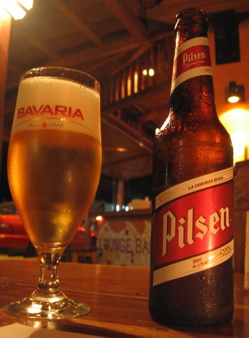

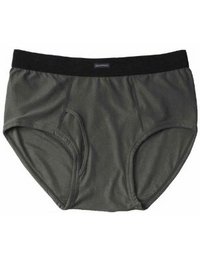

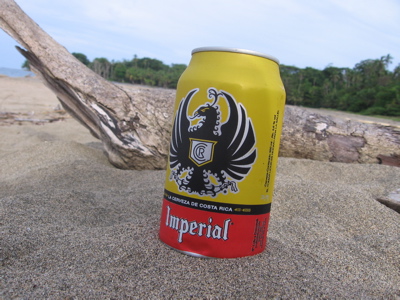 There is something romantic about having a cold beer in the tropics. It was hard to put my finger on at first---the beer is not particularly good, most of it isn't particularly famous, and it's something beyond the "tropical paradise" cliché that folks seem so hung up on. I finally got it: the sweat on the bottle. Leave a beer out in the humid heat for a minute here and its frosty surface is glistening with so much icy condensation that I feel like I'm in the middle of a Budweiser commercial.
There is something romantic about having a cold beer in the tropics. It was hard to put my finger on at first---the beer is not particularly good, most of it isn't particularly famous, and it's something beyond the "tropical paradise" cliché that folks seem so hung up on. I finally got it: the sweat on the bottle. Leave a beer out in the humid heat for a minute here and its frosty surface is glistening with so much icy condensation that I feel like I'm in the middle of a Budweiser commercial.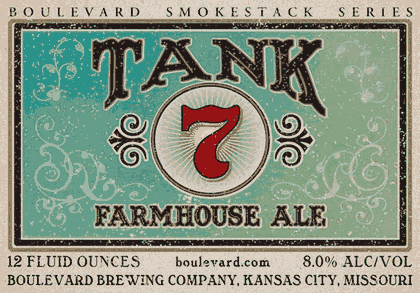
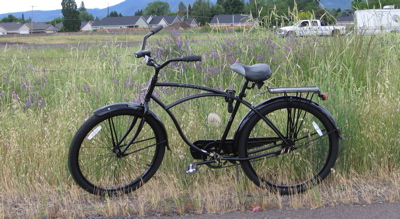
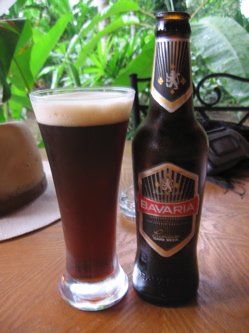

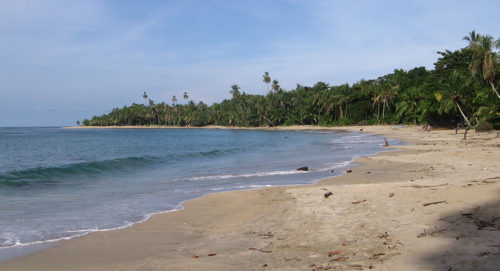
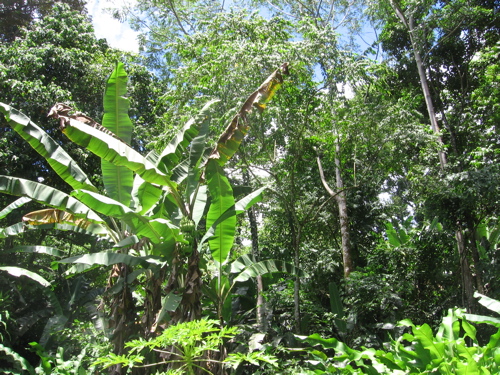
 By
By 




